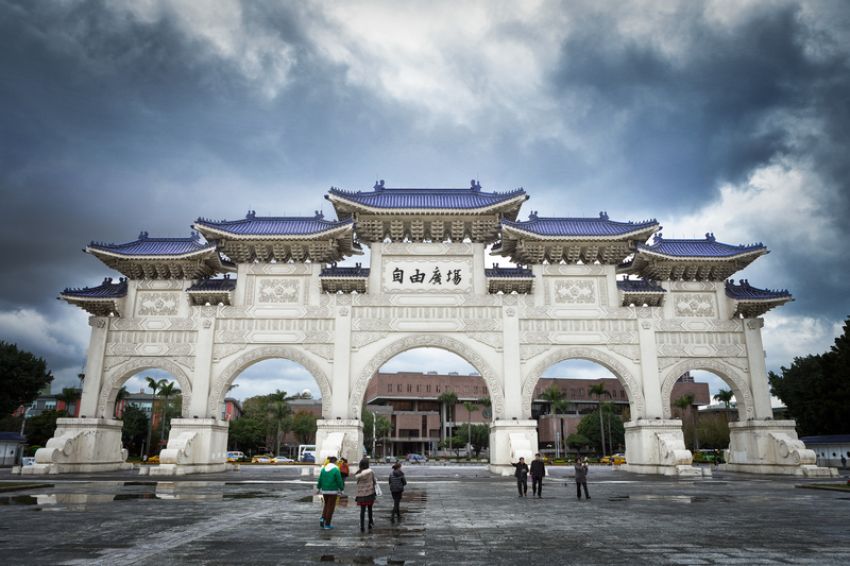
The sabre rattling of the United States and its allies grows as capitalism’s crisis sharpens. International Monetary Fund (IMF) figures indicate a slowing of the global economy, with global economic growth set to shrink from 5.9% last year to 4.4% in 2022 and then further decline to just 3.8% in 2023.
For the US, economic outcomes form a central plank in any foreign policy considerations. An unholy alliance exists between economic requirements, military needs and the broader diplomatic functions of US foreign policy. While the world was digesting the IMF’s figures, the US and its allies were dramatically escalating tensions around the world.
Britain joined the fray with its decision to send a Foreign Affairs Parliamentary Committee delegation to Taiwan. The visit, scheduled for late February, will doubtless raise the ire of China, but that is the purpose of the visit.
Taiwan remains pivotal to the anti-China rhetoric emanating from Washington and echoed by its allies. Last November, a European Union delegation made a similar visit to Taiwan, pledging support for the island.
The US and some of its allies have recently stated that Taiwan should play more of a role in international affairs and have a “meaningful participation in the United Nations system,” as US Secretary of State Antony Blinken put it in October.
The sudden interest in and support for Taiwan is revealing. It is echoed to a great extent in the West’s behaviour towards Ukraine.
China and Russia have been declared threats to the security, sovereignty and peace of other nations. Both China and Russia are now effectively encircled by the US and its NATO allies. Bases and weapons systems have been placed in close proximity to the borders of each state, with tensions inevitably rising.
While much of the world’s focus has been on the Russia-Ukraine dispute, it is in Taiwan and the South China Sea that we can see how US foreign policy is being implemented.
China threat
China’s economic rise threatens US capitalism. In 2009, then-President Barack Obama declared himself to be the “first Pacific President”. He was true to his word.
In 2011, Obama announced the US’s “pivot to Asia” along with the stationing of greater part of the US fleet and airforce in the South China Sea. Three years later, China began dredging to build islands in the sea on which to station missiles.
China’s move was declared to be an act of hostility, but the chronology is simple enough. There was an action and a reaction. Threatening gestures are met with threatening gestures.
The conflict in Asia has become focused on Taiwan. China has always maintained its right to the island. Whether this is right or wrong is not the issue. The US decision to turn the island into a nuclear armed fortress is quite another matter.
Soon after Joe Biden came to power, his head of the Indo-Pacific Command, Admiral Philip Davidson, announced an initiative last March to provide missile installations in Taiwan, Okinawa and the Philippines with the capacity to “sustain combat operations for extended periods”. These missiles are only a few minutes flying time to Beijing.
The placement of these missiles on Taiwan is provocative in the extreme. Washington severed diplomatic relations with Taiwan in 1979, recognising the legitimacy of China’s claim to the island. This did not stop the US from supplying Taiwan with weapons and promising support in the event of a conflict. What is now happening is that conflict is becoming a reality, meaning the US can claim to be “legitimately” intervening.
The use of Taiwan as a stalking horse for the US is also closely geared to its desires to weaken China’s economy.
Economic war
Taiwan is at the epicentre of an economic war being waged over control of semiconductor chip production. Nothing, from smartphones to supercomputers to advanced weaponry, works without them.
The Taiwan Semiconductor Manufacturing Company (TSMC) produces 24% of the world’s chips and 92% of advanced chips. Unsurprisingly, it has a special relationship with the US.
Chinese company Huawei had been sourcing these chips, but Washington cut their supply chain and pressured TSMC to support the ban. This has prompted China to rapidly increase its own production, as it is acutely aware of the implications.
Wars are fought in many ways. Taiwan plays multiple roles. It hosts weapons that have the capacity to destroy much of China and, through the weapon of technology, is playing another no less deadly role.
Taiwan can almost be seen as a template for how the US is implementing foreign policy. Its economic power is being challenged. Capitalism is in crisis. It has responded with a lethal mix of economic and military force.
The Taiwan template is very much in evidence in the US’s involvement in Europe.
After the collapse of the Soviet Union, Russia was seen as a potential El Dorado for capitalism. Its vast resources appeared to be there for the taking. Russian President Vladimir Putin’s nationalist and authoritarian regime quickly came to be seen as a threat to the US’s vision for the country.
Consequently, NATO began its eastward march into former Soviet territories, all the way to Russia’s border. The familiar encirclement and militarisation of the region ensued.
The establishment of a pro-Western government in Ukraine that now needs to be protected from an “aggressive” Russia is but the latest link in the long-term strategy of weakening Russia.
A weak Russia offers hope for US capital. So does a weak China. As global economic growth continues to shrink, US foreign policy sticks to the script.
[William Briggs is the author of China, the USA and Capitalism's Last Crusade — When survival is all that matters.]